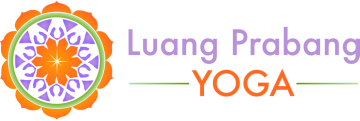 When it comes to modern-day yoga, there are certainly enough styles out there to spin your head around in circles. From the more traditional Ashtanga and Iyengar practices, yoga has sprung into a myriad of branches as a result of branding in a competitive market. Amongst the different styles of yoga, Vinyasa Flow has emerged with increasing popularity in recent years. But Vinyasa Flow itself covers such diverse practices that it can also be divided into subcategories ranging from the more basic “Gentle Flow” to the more dynamic, Ashtanga-inspired “Power Yoga.” As a Vinyasa Yoga teacher however, the true meaning of Vinyasa Flow, to me, lies less in definition of the “style” and more in the “intention” of the practice and the lessons learned through movement. The word “Vinyasa” refers to: (1) The synchronization of breath and movement and (2) an intelligent sequencing of postures linked to create a continuous flow. Whether gentle or dynamic, Vinyasa Flow classes are typically marked by a smooth transition from one posture to the next. For students and teachers with an appreciation for individuality and aversion to rigidity, the practice permits creative freedom. While Vinyasa Flow has its roots in the more structured Ashtanga Yoga, today the practice has absorbed pieces of many different styles and Vinyasa teachers borrow liberally from the world around them.  At its core, Vinyasa Flow is about experiencing life. Through the continuous flow of movement, we are reminded of the impermanence of everything but change. Because there is no pre-defined sequence in Vinyasa Flow, classes are unpredictable, encouraging students to leave behind their expectations. There’s a lesson of acceptance in the flow as we are reminded to receive pleasure and pain, joy and sadness, triumphs and falls equally. The practice of Vinyasa Flow emphasizes the process rather than the end goal, so rather than measuring progress by proficiency in a posture, students are told to observe their own reactions, be it frustration, determination, anger, obsession or enjoyment. It’s the knowledge gained of oneself in the journey towards the posture that is the ultimate lesson here. In the end, Vinyasa Flow is about finding joy in movement as well as joy in life. It’s about being open and adventurous and stepping out of the box. Sometimes, it’s about breaking rules and redefining what you see in front of you. Developing a personal Vinyasa Flow practice at home can also help you to connect with yourself. It’s a great exercise in learning how to give yourself exactly what you need and having fun at the same time. Remember, try not to take yourself or your practice too seriously. Stay lighthearted and enjoy the ride. Blog post by Julie (juliehana.com)
0 Comments
Your comment will be posted after it is approved.
Leave a Reply. |
Archives
September 2023
Categories
All
|

 RSS Feed
RSS Feed
